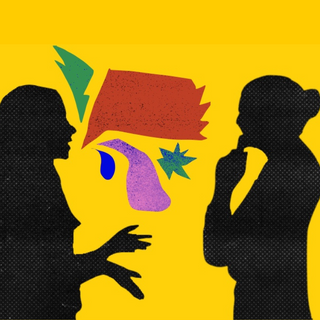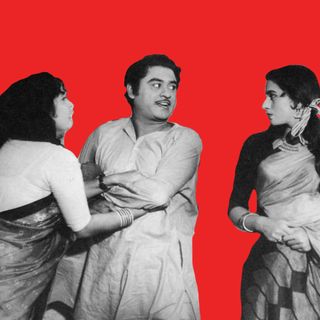
The Daily Wrap: Vairamuthu’s Clout, ISRO at the Temple, and More
In today’s news: Vairamuthu is celebrated, cell-aging is defeated, and ISRO’s chief prays for a mission’s success.

The round-up of the most compelling stories of the day — with our take.
Researchers Find Method to Reverse Cellular Aging
This could revolutionize regenerative medicine and treatment of age-related diseases.
Scientists at Harvard Medical School and Massachusetts Institute of Technology (MIT) recently published a paper outlining the first chemical approach to reverse cells to a younger state – i.e. to reverse aging. “Until recently, the best we could do was slow aging. New discoveries suggest we can now reverse it… This process has previously required gene therapy, limiting its widespread use,” said lead researcher, David A. Sinclair.
As per the press release, the study builds upon the Nobel prize-winning discovery that the expression of certain genes – known as Yamanaka factors – could convert adult cells into induced pluripotent stem cells. According to Nature, pluripotent stem cells are cells that can self-renew by dividing into three primary groups of cells that make up all the cells in an adult body. These cells can therefore potentially develop into any cell or tissue (except extra-embryonic tissues like the placenta) that the body needs for repair. This discovery had raised questions around the possibility of reversing cellular aging without the cells becoming too young, or cancerous.
In the recent study, the researchers found six chemical combinations that could reverse transcriptomic age in less than a week. Previous studies have shown positive results when conducted on optic nerves, brain tissue, kidneys and muscles. It led to improved vision and extended lifespans in mice, and more recently, better vision in monkeys as well.
This research could revolutionize advancements in regenerative medicine, treatment of aging and age-related diseases and may eventually lead to whole-body rejuvenation. But with advancements that can reverse aging come questions around the affordability of it, and whether it would be available to all or be restricted to the elite. Gene therapy, for instance, is an expensive proposition. But researchers note that a chemical alternative could lower costs and shorten development timelines too. “This new discovery offers the potential to reverse aging with a single pill,” Sinclair said. Now, preparations are underway for human clinical trials.
*
Hollywood Shuts Down, As American Actors Join Writers to Protest Use of AI, Low Pay
The Screen Actors Guild (SAG-AFTRA) in Hollywood — representing thousands of performers, including the industry’s A-listers — announced their decision to strike yesterday. This came after their negotiations with film and television production companies ended without any tangible assurance to meet their demands of “better pay, improved working conditions, and a commitment from streaming services that artificial intelligence and computer-generated faces and voices will not replace human actors,” the Hindustan Times reported. The union’s executive director and chief negotiator, Duncan Crabtree-Ireland, reportedly told the media that the strike is “an instrument of last resort” since “they’ve left us with no alternative.”
As Crabtree-Ireland explained further, “[T]hey propose that our background performers should be able to be scanned, get paid for one day’s pay, and their company should own that scan [of] their image, their likeness and should be able to use it for the rest of eternity in any project they want with no consent and no compensation.” Evidently, the studios seek to exploit AI in a way that will undermine the livelihoods of both writers and actors while continuing to ride on the backs of their successes.
Stars Cillian Murphy and Emily Blunt are reported to have left the premiere of the much awaited ‘Oppenheimer,’ in solidarity with the strike — attracting the global media’s attention. Murphy and Blunt aren’t alone, though; 1,60,000 performers are now part of the strike, joining forces with the writers who are part of a separate protest driven by similar goals: better treatment in Hollywood.
*
ISRO Chief’s Visits Temple Ahead of Chandrayan-3
Where is the line between science and faith?
In the lead up to India’s launch of Chandrayaan-3 to the moon, the chairman of Indian Space Research Organization (ISRO) S. Somnath and other officials stopped by at the Tirupati Venkatachalapathy Temple in Andhra Pradesh to offer their prayers. According to Mint, Somnath told reporters, “I need the blessings of Chengalamma Devi…I came here to pray and seek the blessings for the success of this mission.” But the visit has divided Twitter, with many questioning the scientific temper of scientists who blur the line between science and faith.
Some Twitter users mockingly suggested that nimbu-mirchi be attached to the outgoing Chandrayaan-3 as well, others advocated for a distance to be maintained between science and religion. On the opposing side, many lauded the tradition of seeking blessings from gods and goddesses before missions.
This is not the first instance where scientists have courted controversy for their religious beliefs or ritualism before missions. Earlier this year, the joint NASA-ISRO satellite NISAR received an auspicious send-off with the ceremonial smashing of coconuts while ISRO received a jar of “lucky peanuts” from the Jet Propulsion Laboratory director. The peanuts have reportedly been a tradition at JPL since the 1960s and are supposed to beget good luck.
Several reports and studies have previously shown that many scientists are also religious, while superstitious beliefs thrive among space scientists, not only in India but in several other countries as well. While some argue religious thought and action are matters of personal faith, when scientists engage in ritualism and superstition, it strengthens the hold these beliefs have among the populace and undermines the development of a scientific temper.
*
Why Vairamuthu, Lyricist Accused of Sexual Harassment, Continues to Hold Clout
This week, Tamil Nadu’s Chief Minister M K Stalin visited lyricist Vairamuthu at his residence. Since 2018, at least 17 women, including playback singer Chinmayi Sripada, have accused Vairamuthu of sexual harassment, The News Minute reported. “The Chief Minister of Tamil Nadu personally visits the home of a man accused by several women of sexual harassment to wish him on his birthday; I, as a multiple award winning singer and voice over artiste, face a work ban by the Tamil Film Industry since 2018, for naming this poet as a molester in the MeToo movement,” Chinmayi said on social media. Singer Bhuvana Seshan also accused Vairamuthu – anonymously at first, and later revealing her identity to express her frustration with the DMK for criticizing BJP’s support for accused Wrestling Federation of India chief, Brij Bhushan Singh.
Feminists have often critiqued the archetype of the ‘Great Artist’ – usually a man, whose art is considered to transcend the limitations of their personalities. Many have pointed out that the idea of ‘separating the art from the artist’ is to blame. But the current situation shows how that was never the case – here, the artist is repeatedly felicitated for their art, making the art and the artist inseparable.
Moreover, high art” in India is often associated with unquestioning respect, obedience, and hierarchy, with the senior artist’s legacy carrying immense weight. Power imbalances like these have institutionalized a culture of resistance to any accusations against industry heavyweights – this was evident when, in 2018, the Carnatic music industry also saw a slew of #MeToo allegations. “Members must obey or pretend to obey unspoken demands regarding their diet (eggless vegetarian), dress (traditional and/or modest), and relationships (arranged intra-caste marriages),” Sahana Venugopal noted in Feminism in India. Vairamuthu also represents the difficulties of accusing men who are attached to progressive causes – the Dravidian movement is said to have deeply influenced the poet, which in turn prompted his long-standing relationship with the DMK. It thus prompts a new question – can we separate the artist from the politics?
Rohitha Naraharisetty is a Senior Associate Editor at The Swaddle. She writes about the intersection of gender, caste, social movements, and pop culture. She can be found on Instagram at @rohitha_97 or on Twitter at @romimacaronii.
Related


Woe Is Me! “My Friend’s Ex‑Girlfriend Made Him Stop Talking to Me. Should I Call Him Anyway?”
